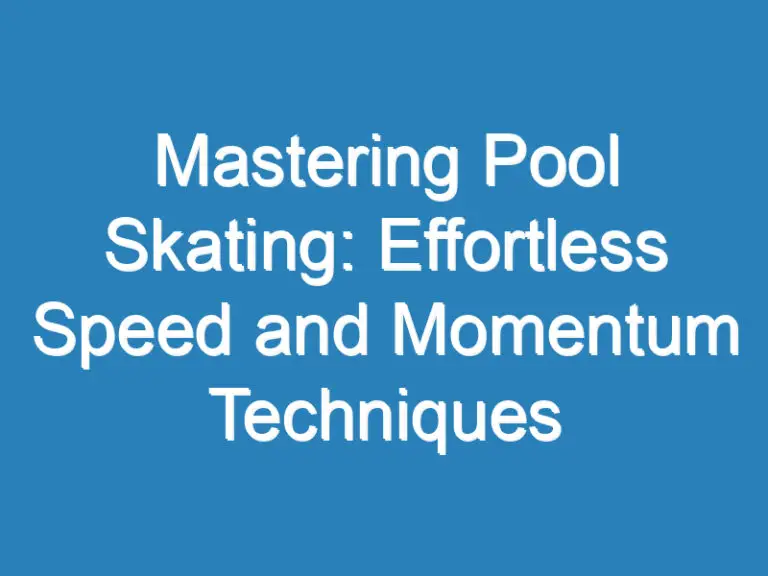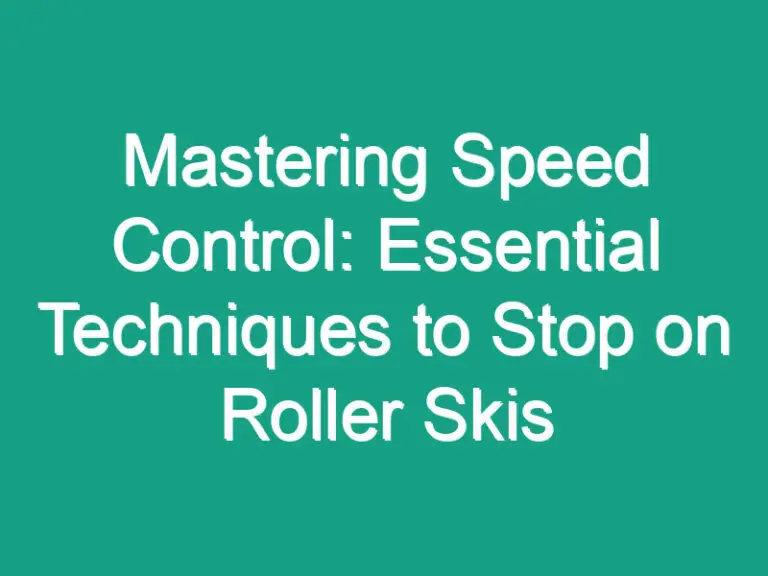
Are you ready to master the art of driving a wakeboard boat? As someone who’s spent years navigating the waters and creating epic wakeboarding experiences, I’m here to share my expert tips and tricks with you.
Driving a wakeboard boat isn’t just about cruising around – it’s about creating the perfect wake for riders to catch some serious air. From understanding boat speed to executing smooth turns, I’ll guide you through the essentials of being a pro wakeboard boat driver.
Key Takeaways
- Master the Basics: Understanding boat speed, weight distribution, trim, and turns are essential for creating the perfect wakeboarding experience.
- Set the Right Boat Speed: Adjust the speed based on rider skill level and preferences, and maintain a steady speed for a smooth ride.
- Create the Perfect Wake: Consider ballast placement, speed control, trim adjustment, rope length, and consistent driving path to optimize the wake for riders.
- Make Smooth Turns: Focus on gradual turns, anticipating the turn, and maintaining consistent speed to preserve the wakeboarding conditions.
- Prioritize Safety: Always have a spotter, maintain a safe distance, follow boating rules, carry emergency equipment, avoid abrupt maneuvers, check weather conditions, and communicate clearly for a safe experience.
Understanding Wakeboarding Boat Basics
When it comes to wakeboarding boat basics, there are key factors that every driver should grasp to create a thrilling experience for riders. Here are some essential points to keep in mind:
- Boat Speed: Maintaining a consistent speed is crucial for riders to catch air and perform tricks effectively.
- Weight Distribution: Proper weight distribution within the boat is essential for shaping the wake and providing an optimal riding experience.
- Trim and Tilt: Adjusting the trim of the boat can help fine-tune the size and shape of the wake, catering to the preferences of the riders.
- Turn Execution: Smooth and well-timed turns are pivotal for setting up the ideal conditions for riders to navigate the wake smoothly.
Mastering these wakeboarding boat basics is fundamental to becoming a skilled driver capable of creating the perfect conditions for an unforgettable wakeboarding session.
Setting the Right Boat Speed
When Setting the Right Boat Speed for wakeboarding, it’s crucial to find the sweet spot that suits the rider’s skill level and preferences.
- Beginners typically start around 15-18 mph, allowing them to get comfortable with the feel of riding the wake.
- Intermediate riders often prefer speeds in the range of 18-22 mph, which can help them progress and perform basic tricks more easily.
- Advanced riders, aiming for big air and complex maneuvers, often thrive at speeds between 22-24 mph.
Remember, speed variations may be needed based on factors like rider weight, rope length, and water conditions, so being adaptable is key.
To enhance the wakeboarding experience, it’s essential to maintain steady speed throughout the ride. Inconsistent speeds can disrupt the rider’s rhythm and make it challenging for them to anticipate the wake.
Monitoring the boat’s speedometer frequently and adjusting throttle accordingly is vital to ensure a smooth and enjoyable ride for the wakeboarder.
Creating the Perfect Wake
When Creating the Perfect Wake for wakeboarding, it’s important to consider a few key factors to enhance the rider’s experience and performance. Here are some essential tips to help you achieve an optimal wake:
- Ballast Placement: Proper distribution of weight in the boat is crucial. Placing ballast towards the rear of the boat creates a larger wake, ideal for advanced riders seeking bigger air and more challenging tricks.
- Speed Control: Maintaining a consistent speed is essential in creating a clean and well-defined wake. For wakeboarding, the ideal speed range typically falls between 18-24 mph, depending on the rider’s skill level and preferences.
- Trim Adjustment: Adjusting the trim of the boat can significantly impact the shape and size of the wake. Experiment with different trim settings to find the optimal configuration for the best wakeboarding experience.
- Rope Length: The length of the tow rope also plays a crucial role in the wakeboarding experience. Beginners usually start with a shorter rope length to maintain control, while advanced riders prefer a longer rope for more challenging maneuvers.
- Consistent Path: Maintaining a straight and consistent path while driving the boat is essential for creating a uniform wake. Avoid sharp turns or erratic movements that can distort the shape of the wake and disrupt the rider’s performance.
Achieving the perfect wake requires a combination of skill, experience, and attention to detail. By fine-tuning these key elements, you can optimize the wakeboarding conditions for an exciting and rewarding ride.
Making Smooth Turns
When driving a wakeboard boat, Making Smooth Turns is essential for maintaining the optimal wakeboarding conditions. Here are some tips to help you navigate turns like a pro:
- Gradual Turns: I always recommend making gradual turns to prevent disrupting the wake and causing discomfort to the rider.
- Anticipate the Turn: It’s important to anticipate when you need to make a turn, allowing you to adjust your speed and positioning smoothly.
- Maintain Consistent Speed: Keeping a consistent speed throughout the turn is key to ensuring a seamless transition without affecting the wake.
Remember, practice makes perfect when it comes to mastering smooth turns while driving a wakeboard boat.
Safety Tips for Wakeboard Boat Driving
When driving a wakeboard boat, ensuring safety is crucial to protect both the riders and others on the water. Here are some essential safety tips to keep in mind:
- Always have a designated spotter onboard to keep an eye on the rider.
- Maintain a safe distance from other boats and obstacles to avoid collisions.
- Be familiar with the boating rules and regulations specific to the body of water you are in.
- Keep emergency equipment on board, such as a first aid kit and flotation devices, in case of any accidents.
- Avoid abrupt maneuvers that could destabilize the boat and endanger the riders.
- Check the weather conditions before heading out on the water and be prepared to react accordingly.
- Communicate clearly with the riders to ensure they understand hand signals and instructions for a safe experience.
Prioritizing safety while driving a wakeboard boat is key to enjoying the sport responsibly and keeping everyone involved protected and secure.
Conclusion
Mastering the art of driving a wakeboard boat is crucial for creating the perfect wakeboarding experience. By focusing on factors like ballast placement, speed control, trim adjustment, and maintaining a consistent path, you can enhance the rider’s performance. Proper weight distribution, speed adjustments, experimenting with trim settings, and using the right rope length are key elements to consider. Smooth turns play a vital role in maintaining optimal wakeboarding conditions, requiring gradual maneuvers and consistent speeds. Prioritizing safety with designated spotters, adherence to boating rules, and clear communication ensures a safe and enjoyable experience for all. Remember, practice makes perfect, so keep honing your skills to drive a wakeboard boat like a pro.
Frequently Asked Questions
How important is ballast placement for creating the perfect wake for wakeboarding?
Ballast placement is crucial for creating an ideal wake for wakeboarding as it helps to enhance the size and shape of the wake, providing better riding conditions for wakeboarders.
What is the recommended speed range for wakeboarding?
A speed range between 18-24 mph is recommended for wakeboarding to ensure optimal riding conditions and performance on the wake.
Why is adjusting trim settings important for wakeboarding?
Adjusting trim settings on the boat helps in fine-tuning the wake shape and size, contributing to a better overall wakeboarding experience.
How does rope length affect wakeboarding?
Using the appropriate rope length is essential for wakeboarding as it impacts the rider’s positioning and ability to maneuver on the wake effectively.
What are some tips for making smooth turns while driving a wakeboard boat?
Tips for making smooth turns include taking gradual turns, anticipating the movement, maintaining a consistent speed, and ensuring a seamless transition for wakeboarders.
Why is safety emphasized when driving a wakeboard boat?
Safety is crucial when driving a wakeboard boat to ensure the well-being of all involved, including having a spotter, following boating rules, carrying emergency equipment, and clear communication with riders.

Hi, This is Roasalin, I have loved Skating since my early childhood days, and here I share my experiences and tips for beginners who want to turn into pro skaters. I hope you find it useful. you can contact me here






